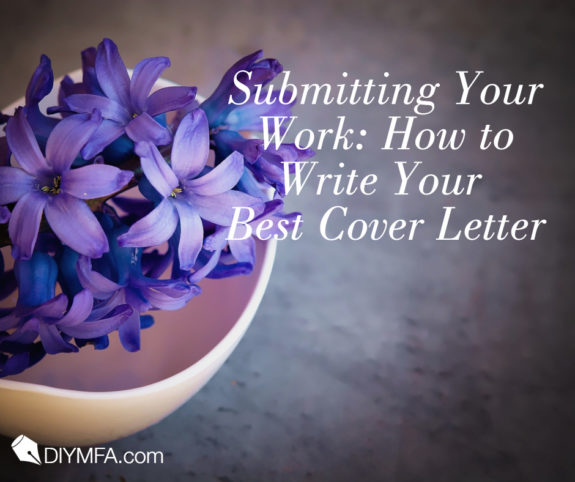When you submit your essay, poetry, or short story to a magazine or journal, your cover letter is usually the first thing an editor sees. While it is important, it doesn’t need to be intimidating or take much of your time to write.
As editor at 2 Elizabeths, I see a variety of cover letters every day; some are excellent, and others could stand to be improved. There are a few key pieces of information you want to include in your own cover letters, while keeping them short and sweet. In fact, a cover letter should only be a couple of paragraphs long, and no more than roughly 100 – 150 words.
How to Write Your Best Cover Letter
A little research will go a long way. And most often, this simple research is the step I see skipped. Stand apart from the crowd or proverbial “slush pile” by doing a couple of things in advance of penning your next cover letter.
- Seek out the editor’s name, and address the letter to him/her, as opposed to using a generic greeting. Typically, you can find this information either on the magazine or journal’s website or in the submission guidelines. This tiny shift in the letter feels much more personal and makes it clear from the get go that you’ve taken the time to tailor your cover letter to the publication, as opposed to blasting out the same generic letter to 20 different literary magazines.
- Be sure to read the publication’s submission guidelines thoroughly. Many publications will state in their guidelines the exact details that need to be included in a cover letter.
With some variation, a general rule of thumb is to include the following:
- Editor’s name (if you can locate it)
- Word count
- Title
- Genre/category
- Brief description of your piece
- If you have been published previously, state where
- Whether your piece is a simultaneous submission (definition below)
- Your name
Note – If you have not yet been published, simply leave that piece out! If that is the case, most publications will still welcome your submissions warmly.
Important Terms to Know
The term simultaneous submission means that you will be sending the same piece to several literary magazines or journals at the same time. Most publications accept simultaneous submissions, but some do not. If a publication does not accept them, this will be stated in their guidelines.
Should your work be selected for publishing by one magazine, it’s important to notify other publications where you have submitted that piece. This courtesy will prevent complications and will keep you in good grace with various editors should you wish to submit to them again in the future.
The term multiple submission means that you are submitting multiple pieces to the same literary magazine or journal.
Cover Letter Example
Dear Sandra,
Please consider this 2,460-word short fiction piece, titled “John.” I discovered your publication quite some time ago and am an avid reader of the fiction and poetry that you publish.
The piece I am submitting, “John,” is a fictitious tale inspired by the impact of a whirlwind, yet meaningful romance I experienced last year. In this story, I gently explore the life lessons associated with young love, with a touch of humor.
This is a simultaneous submission, and I will notify you if the piece is accepted elsewhere.
Thank you for your consideration.
Kindest Regards,
Jane Doe
Why this Works
In this letter, Jane includes all key information, while keeping her letter clear and concise. In her second sentence, she briefly states how she is familiar with the magazine. While doing this isn’t required, if done tastefully, it can be a nice touch! Another example might be to say “I read and enjoyed your spring issue, and I feel that my work is a good fit for your magazine.”
Pro Tip: When you submit your work, keep a simple spreadsheet that tracks the following items to prevent you from submitting the same piece twice to a magazine or journal. There is no reason to duplicate your work, and avoiding doing so will keep you looking organized in the eyes of the editors you’re reaching out to.
- Title of the piece you submitted
- Name of the publication you submitted to
- Date of submission
- Status of submission (i.e. Did you hear back from that editor?)
Follow these tips to help you pin down your next cover letter with finesse. And if you’re so inclined, grab a copy of the 2 Elizabeths submission guidelines. We’d love to read your work.
 Elise Holland is the editor of 2 Elizabeths, a literary magazine focused on poetry and short fiction, with an emphasis on romance and women’s fiction. Her work has been published in Writer’s Digest and has appeared on Jane Friedman’s blog. Find Elise online at 2Elizabeths.com.
Elise Holland is the editor of 2 Elizabeths, a literary magazine focused on poetry and short fiction, with an emphasis on romance and women’s fiction. Her work has been published in Writer’s Digest and has appeared on Jane Friedman’s blog. Find Elise online at 2Elizabeths.com.







